Since it was first developed in 2014, the Stochastic Cognitive Model has been further adapted and optimised. Data input from real-life driving situations is fed into the simulations so as to ensure they resemble real-world traffic scenarios as closely as possible. With this, and a focus on the driver’s capacity for adaptation and reaction to any kind of simulated situation, the SCM covers all sorts of aspects that influence a real-world driving scenario, thereby providing the ideal basis for a realistic driving simulation.
COGNITIVE PROCESS.
As the SCM is built on cognitive architecture, cognitive processes are a vital part of the simulations. Gaze behaviour, data processing in the mental model, situation recognition of the simulated human driver and realistic decision-making have an essential role to play in the make-up of the SCM.
As the goal of the SCM is to simulate driver behaviour in a way that is as close as possible to real-world behaviour, all these cognitive processes form a chain reaction and influence the outcome of each scenario, depending on the situational characteristics of the simulation.

STOCHASTICS.
Realistic driving behaviour is both driver-related and situation-dependent. It varies within a situation which is objectively the same between different real-world drivers. For this reason, the Stochastic Cognitive Model provides specific distributions for driver-related parameters. These might influence the driver’s perception and cognition, compliance with traffic rules, and actions relating to car-following or lane-changing, for example.
The distributions are based on different data sources such as FOTs, driving simulator studies and traffic data. For each agent in the simulation, the parameters are drawn from these specific distributions at the beginning of the simulation with the aim of obtaining a representative driver population based on the parameters sampling.
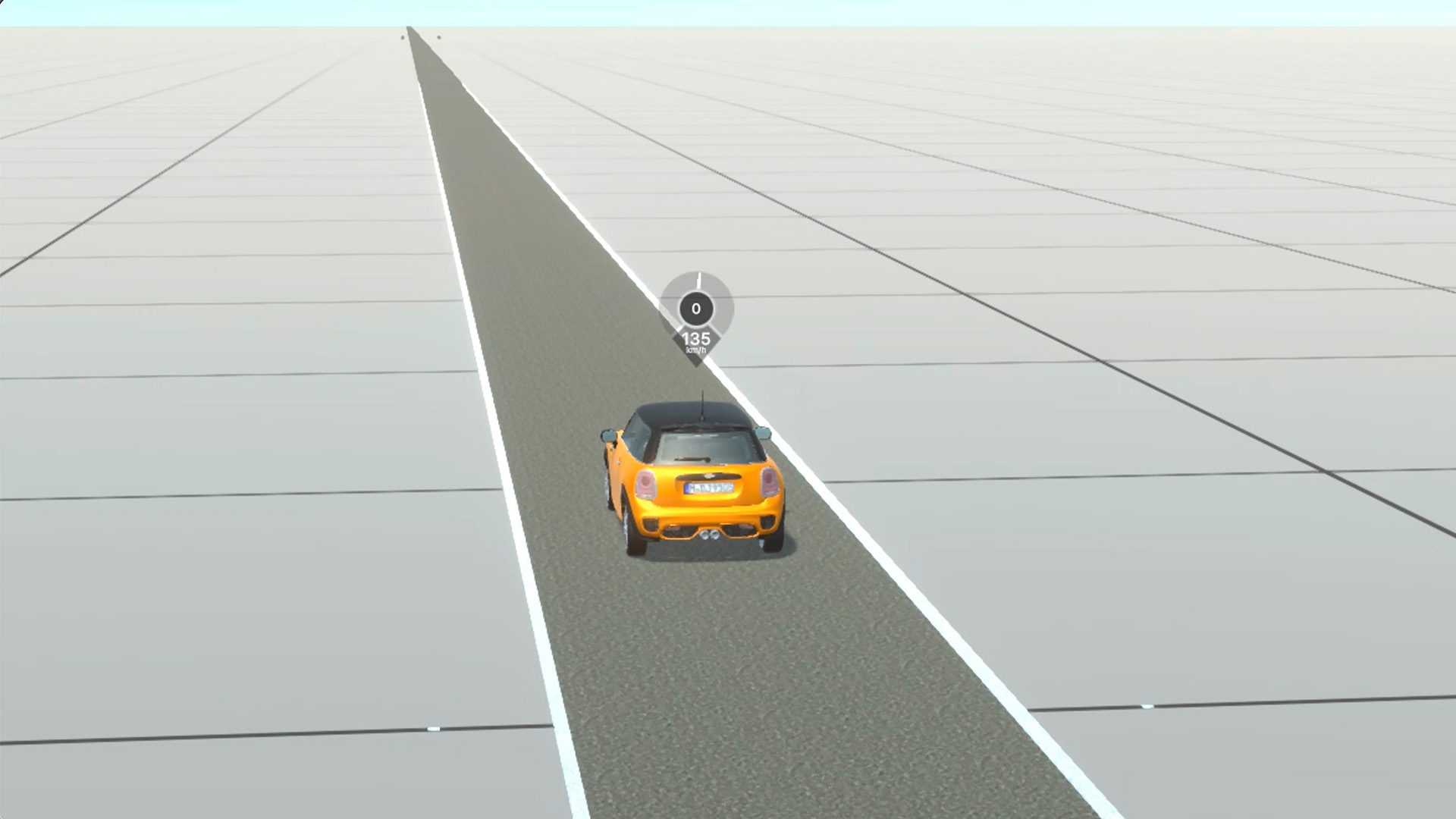
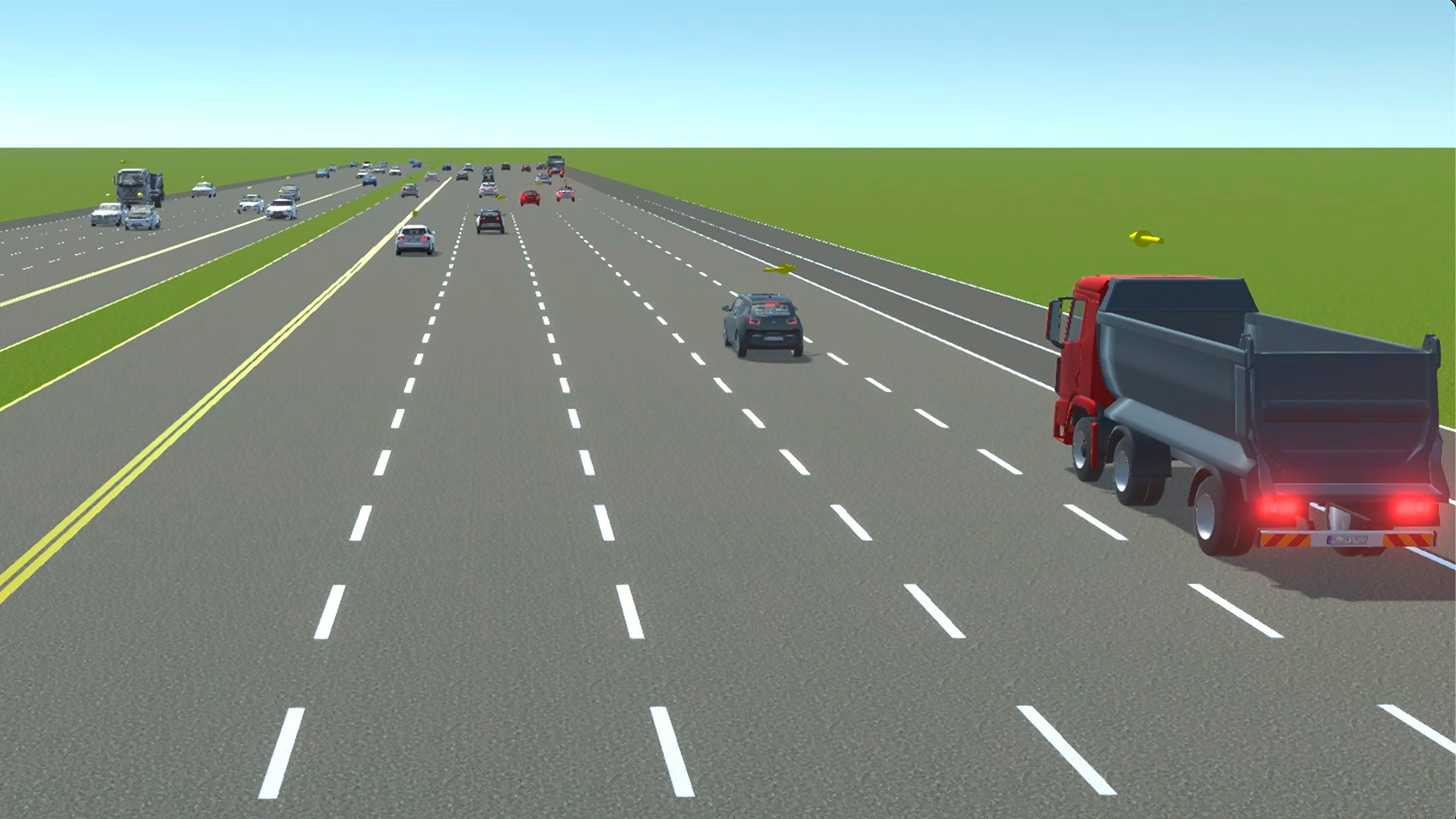
ROAD USER TYPES.
The SCM was initially developed to represent realistic behaviour of passenger vehicle drivers. But it can also be applied to other road user types, for instance trucks and buses. The SCM is also capable of simulating motorcyclists. However, it must be noted that the SCM has not yet been validated for trucks, buses or motorcycles.
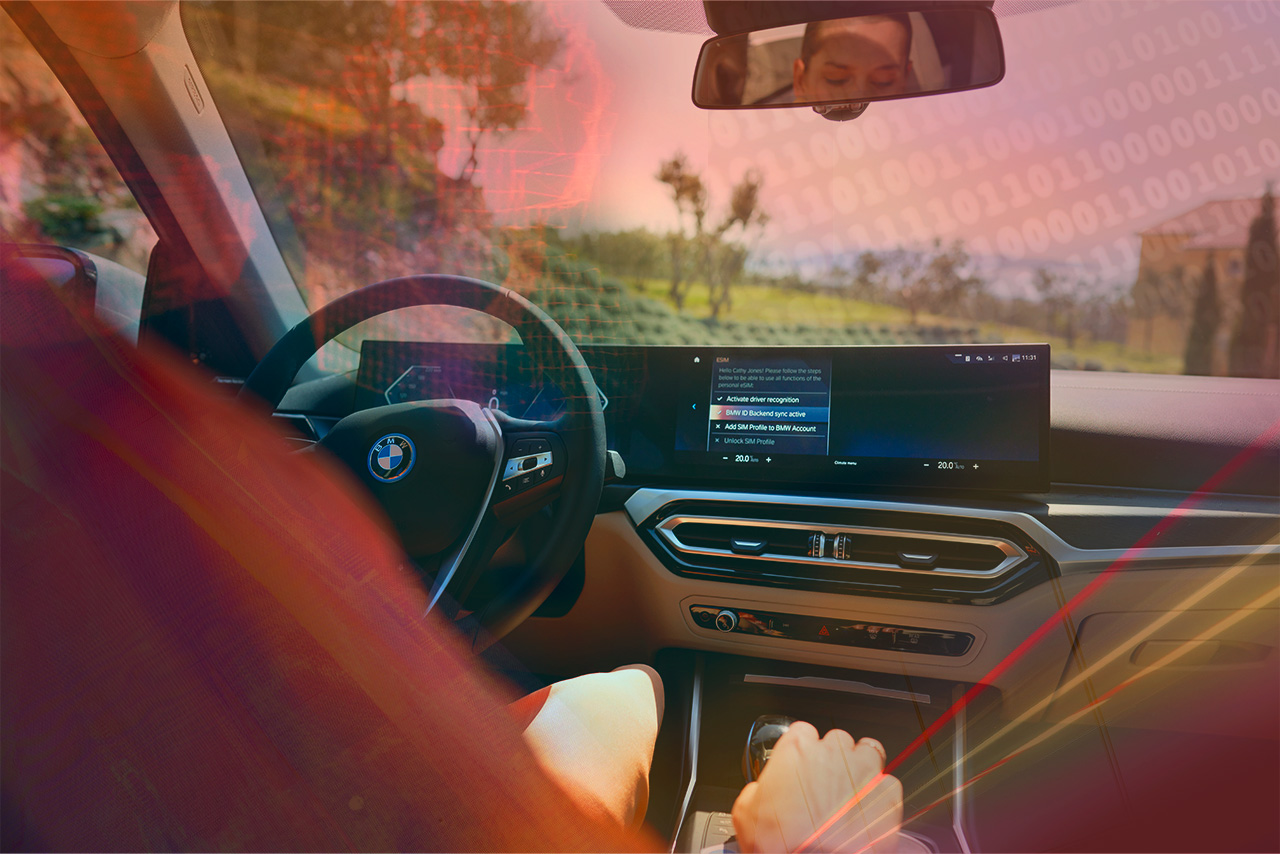
VISUALISATION OF THE AGENT’S MENTAL MODEL.
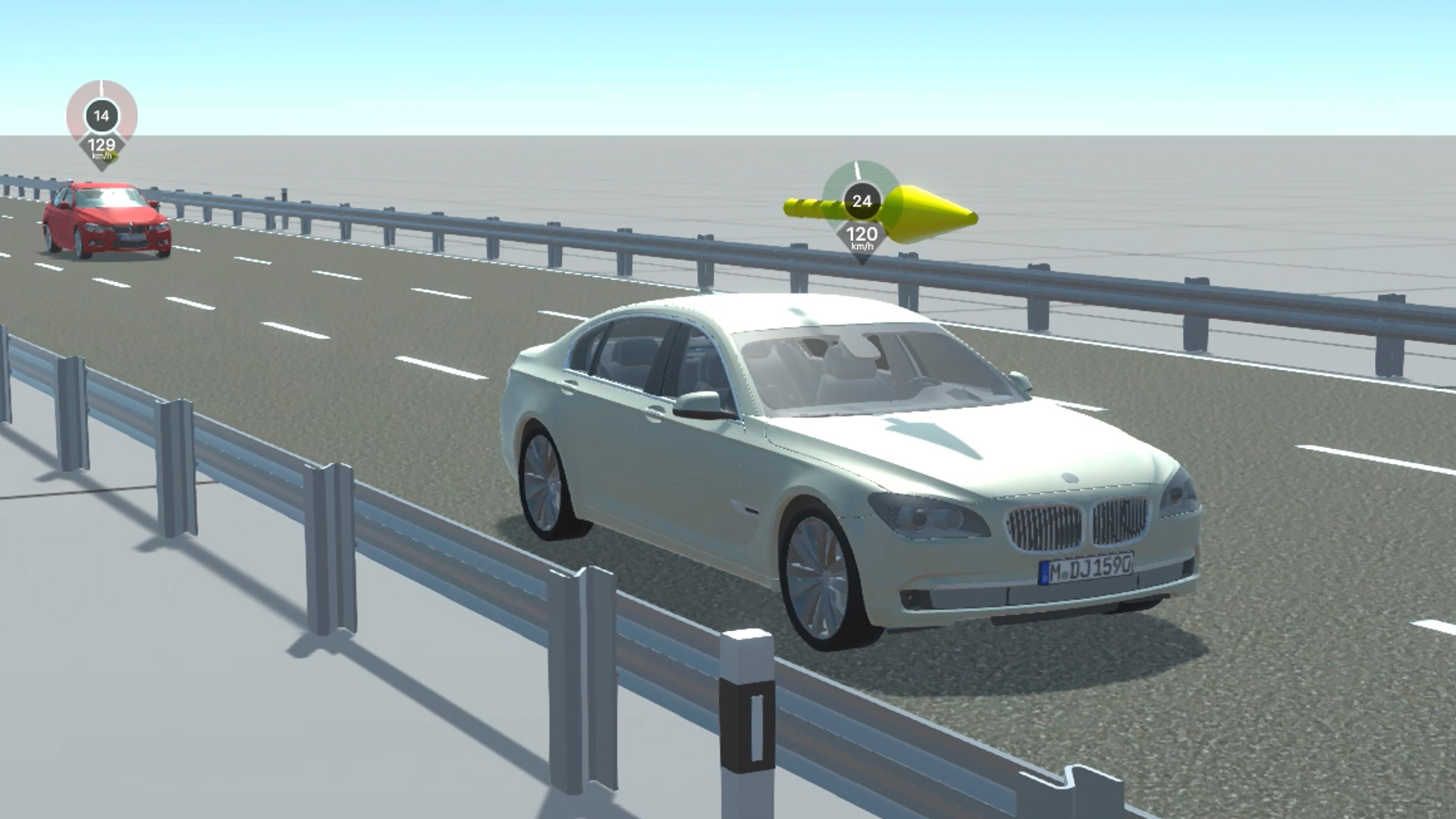
One of the most exciting features of the Stochastic Cognitive Model is its ability to visualise the agent's mental model. This feature not only captures what the agent is seeing, but also how the agent is interpreting other vehicles, thereby extrapolating vehicles’ movements when they are not visually perceived by the agent. In our visualisation, this is represented by transparent bounding boxes of the vehicles that currently exist in the agent’s mental model.
With the agent’s mental model, the SCM is capable of simulating visual attention and inattention, thus covering a wide range of possible driving scenarios. Visual attention modelling is key to realistic simulated driving scenarios, as it provides essential input for sequential cognitive processes.
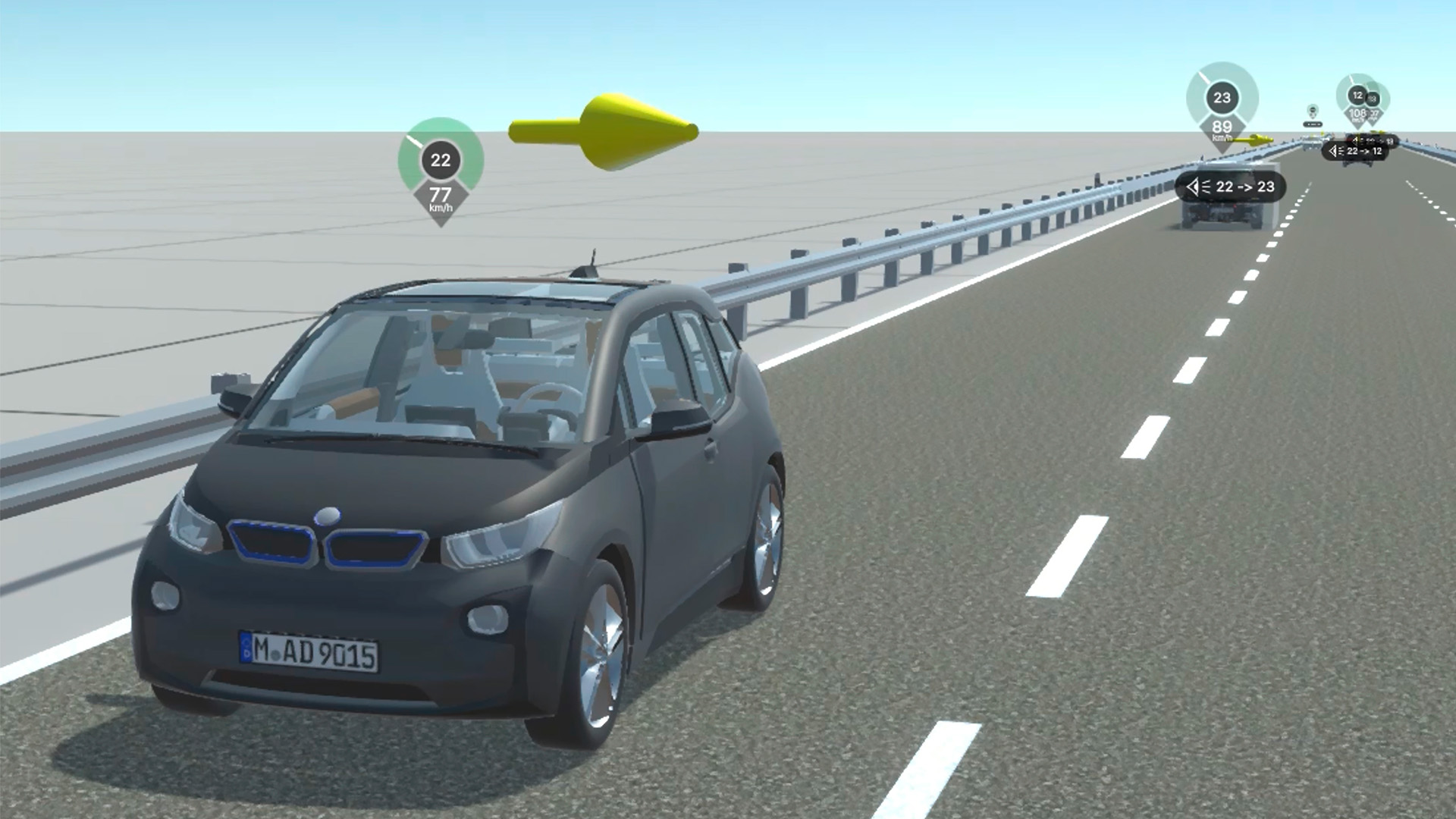
DATA FOR PARAMETRISATION.
In order to accurately represent real-world driver behaviour, real-world data needs to be implemented in the SCM. For this reason, field operational tests, drone data, simulator studies, and accident data are used as sources so as to achieve both accurate representation and validation.

VALIDATION.

While not all aspects of a driver behaviour model such as the SCM can be validated completely, many aspects and levels are made to be as close to a real-world driving scenario as is feasible. With the focus on traffic behaviour and individual driver behaviour, the simulations mimic real-world driving behaviour and can be said to take into account all sorts of traffic parameters.




